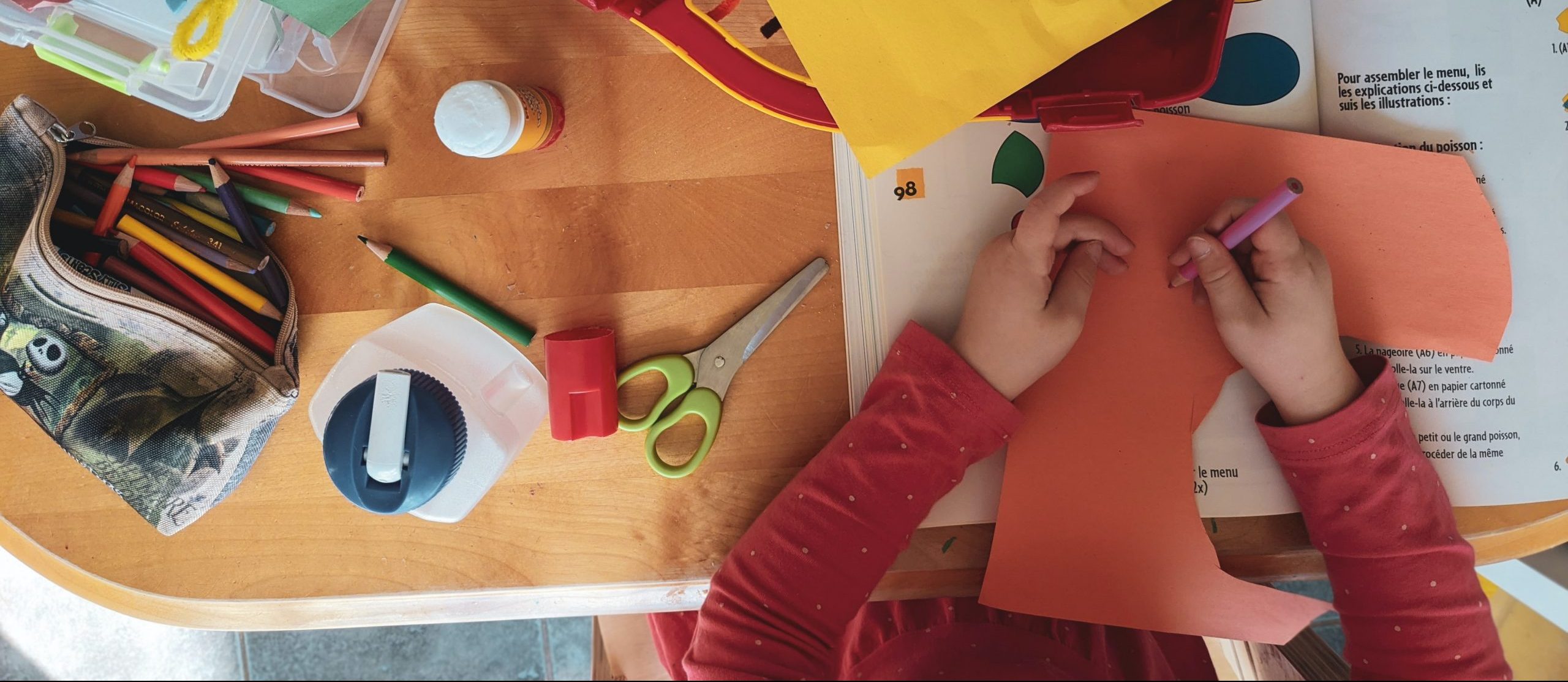Collage and Print Media Text
GRADES K-5
This lesson can be adapted to suit different grade and skill levels.
English Language Arts
RL. KID: Analyze how and why individuals, events, and ideas develop and interact over the course of a text.
Rl. IKI: Integrate and evaluate content presented in diverse formats and media, including visually and quantitatively, as well as in words.
GOALS
Students will be able to:
- Identify the elements of a story
- Discuss how images and words create meaning in a text
- Write a story about an artwork
- Create a collage that tells a story
The visual strategies of collage – layering, overlapping, and combining disparate elements to create new meanings – are prevalent tools for artists.
Text has been integral to collage since the first examples were created in the early twentieth century. Early Cubist artists Pablo Picasso and Georges Braque often included pieces of newspaper, advertisements, sheet music, and painted letters as a way of linking art to the everyday world. Using text added precise messages to collage and often referenced current events. Artists today still use this strategy.
In work like Amerika IX by Tim Rollins, text is the foundation for collage – both literally and figuratively – and provides context and meaning.
ARTWORK
Tim Rollins, K.O.S. and Kids of Charlotte, Amerika IX, 1987
In 1981, Tim Rollins was recruited by the Intermediate School 52 in the South Bronx to develop a curriculum that incorporated making art with reading and writing for students classified as “academically or emotionally at risk.” Rollins and his students collaboratively developed K.O.S., Kids of Survival, whose signature style consisted of painting on pages from classical books of European art and literature.
Amerika IX is part of a series of paintings based on Franz Kafka’s novel Amerika. Pages from the novel were used as the base for Rollins’ work, and the golden horn imagery was also borrowed from Kafka’s text.
To create this piece, Rollins and K.O.S. teamed up with a group of youth from Charlotte, North Carolina. Rollins asked the students, “If you could be a golden instrument … if you could play a song of your freedom and dignity and your future and everything you feel about Amerika and this country … what would your horn look like?” This work was their collective response.
More information about Tim Rollins:
https://www.artnews.com/art-news/retrospective/archives-tim-rollins-goes-dead-end-avant-garde-1988-9590/
https://theartsandeducation.wordpress.com/2017/12/27/what-we-can-learn-from-tim-rollins-1955-2017/
IMAGE CREDIT: Tim Rollins, K.O.S. and Kids of Charlotte (American, 1955 – 2017), Amerika IX, 1987. Mixed media and collage. Gift of the Artists and Knight Gallery, Spirit Square Center for the Arts, with support from the North Carolina Arts Council, 1987.33. Collection of The Mint Museum, Charlotte, NC. © Tim Rollins, K.O.S. and Kids of Charlotte, 1987.
VOCABULARY
Collage – cutting and gluing different images in an artwork
Symbol – something that communicates meaning through imagery
Text – writing, written language in printed form
Mixed Media – work of art using more than one medium (examples: charcoal drawing on fabric, printmaking and drawing combined in one piece)

ACTIVITY SUGGESTIONS
Participants will create a collage using pages from a book as the foundation, with symbolic imagery drawn, painted, or collaged on top to create meaning. Participants should think about the use of the written text as well as the symbolic imagery in their artwork.
INSTRUCTIONS
- Review the history and inspiration behind Amerika IX by Tim Rollins and K.O.S. Kafka’s writing reflected these artists’ desire to convey the importance of being heard and the need to respect all voices.
- Have students choose a book or story that relates to their interests. The teacher may choose to utilize discarded books from the library like encyclopedias and dictionaries to focus on the meaning or words and how we use them. Use pages from these books to cover the canvas board or sturdy material provided as a base for this activity. Use the craft glue to thoroughly coat the surface of the board and overlap the pages until the surface is covered completely.
- Using scrap paper, students should draw concepts for how they perceive their voices and the importance of being heard and understood/respected. K.O.S. used golden, abstracted imagery of instruments and organic, body-like forms to visualize the value of their voices. What colors, shapes, objects would you use to emphasize the importance of your voice?
- Use drawing/painting/collage materials to layer these symbolic images over the pages used in the background. Think about how the imagery covers or draws attention to certain words and phrases as well as the overall composition across the artwork– What will draw the viewer’s attention? What do you want them to notice? What colors/lines/shapes can you use to create balance?
MATERIALS
- 8 x 10 inch of cardboard, canvas board, or other thick materials that can hold layers of glue/paper (recommended 80lb weight paper and above)
- Pencils
- Used book pages (found, printed, or photocopied)
- Scissors
- Glue Sticks, Craft glue like Mod Podge, PVA, or white school glue
- Drawing/painting materials (charcoal, oils pastels, water color, other paints)
- Collage materials (magazines, photographs, print images, fabric, etc)


